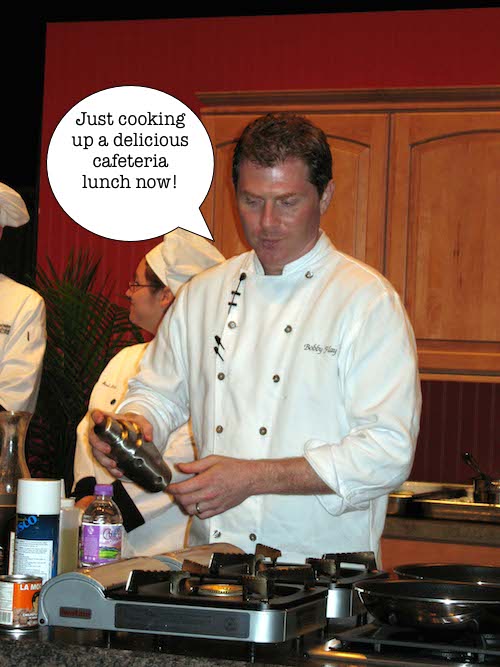What’s your problem? Do you have a problem-solution essay due soon?
Problem solved.
I got a chance to sit down with Kibin editor Buz H. to get his best advice for tackling the problem-solution essay.
Take it away, Buz.
So, What Is a Problem-Solution Essay?
A problem-solution essay is just like it sounds–an essay that presents a problem and then poses a solution to that problem. This type of writing is more common than you might think, appearing in various places such as political opinion pieces, parenting journals, business meetings, and even in school assignments!
I can still remember my first problem-solution essay, which I presented to my parents in verbal form. I used my considerable six-year-old vocabulary to grip their emotions with my most pressing need–my lack of Legos.
Then, I presented various solutions to that problem, most of which simply consisted of my parents buying me Lego sets at some point in the near future. I must have been on to something, since soon I was the proud owner not only of a pirate ship but also a castle!

Ever since then, convincing people that problems exist and that solutions need to be implemented has been an important part of my life. While I’ve moved on to more pressing issues than that of toy accumulation, the process I learned in my youth remains.
Let’s look, then, at some things that make a problem-solution essay most effective.
Problem-Solution Essay Tips: What Makes a Good Problem-Solution Essay?
As Maria taught us in The Sound of Music, the beginning is a very good place to start.
In this case, starting at the beginning means that we start with the problem part of our problem-solution essay. A clear definition of the issue and precise communication about what factors are contributing to its persistence is foundational to a good essay.
Nobody can be motivated to solve a problem that they aren’t convinced needs fixing. If an author is trying to pass what is merely a pet peeve or a personal annoyance off as a problem, the readership will not be motivated to accept the solution as presented.
Therefore, a full, in-depth exploration of the situation is critical to the success of the essay.
As an example, let’s take something that students everywhere can agree on: the food served in the cafeteria.
If my essay presents only that the food in the cafeteria tastes bad, or that students are unhappy with it, or, in short, whines with an entitled attitude, my readers will not see that there really is a problem with the food. The underlying issue will be clouded by my own personal annoyances.
What my essay needs to show is why the food in the cafeteria is a problem outside of simple personal preferences. Perhaps the nutritional value is too low, or perhaps the value received in exchange for the money spent is inadequate. Whatever the particulars of the case may be, moving from personal annoyance to facts about your problem is fundamental to a persuasive essay.
Once the problem has been laid out, the solution is ripe for the picking. If you have managed to convince your readers to share your outlook on the situation, finding a solution is actually the easier part.
Since you’ve been careful to be specific and factual in your first portion, you have laid a clear path forward for actionable steps.
Good solutions will be achievable, meaning that there actually is a way to implement them within your current context.
Using the cafeteria example above, perhaps you’d like to propose that your school re-brand its cafeteria as the Iron Chef Kitchen Stadium and have culinary superstars like Bobby Flay come in each day and compete against each other to prepare a school lunch.
While that would of course be amazing, it’s simply not realistic. In proposing such a pie-in-the-sky solution, you remove not only your solution from the realm of reality but also paint your problem in such a way that it can’t actually be solved.
The last thing you want to do is to demotivate your readership in that way–present a solution that is possible.
Maybe your school can’t get Bobby Flay, but maybe they can get a nutrition professor from the local community college to help evaluate the menu. When solutions are close to home and specific, your readers are more likely to want to help pitch in to make them a reality.
Problem-Solution Essay Tips: What Makes for a Bad Problem-Solution Essay
There are a few pitfalls to avoid when constructing your own problem-solution essay. The most common is to focus only on either the problem or the solution to the exclusion of the other half of the equation.
If you focus only on explaining the problem and never get to a solution, your essay will be like a Transformer who never finds the AllSpark–just a dead bunch of metal that somebody, somewhere should dispose of.
Your essay should look to imbue a new sense of life to your readership in the form of a set of actions or ideas that they can rally around. If you exclude a solution, you choke that life out at the roots. All you have done in that case is depress them with a list of life’s problems.
They already have ninety-nine problems; they don’t need your one more!
By the same token, an essay that is all solution and no problem is like a soccer team who has no idea where the goal is. A soccer team should work together to get the ball where it needs to be–the goal! If there were no goal, there would be no sense of cohesion or purpose to a team’s movements, and soccer would basically be a giant game of keep-away.
In the same way, if your solution doesn’t move people towards a common purpose, then your readers will have nothing to rally around. A clear presentation of the problem is integral to rousing your readers to action.
It may seem backwards, but the better job you’ve done at outlining the problem as a situation which deeply needs solving, the more likely you will be to be effective at getting people on board with your solution. Good problem-solution essays need a compelling problem half and an intriguing solution half to succeed.
Problem-Solution Essay Tips: What Are Three Steps to Writing a Better Problem-Solution Essay?
Step One: Do your research!
I’ve already advocated for a deep, precise definition of the problem and clearly delineated steps forward as a solution. To do that process well, you’ll need data, statistics, and other research.
You shouldn’t expect your readers to take your opinions at face value–don’t make them take that leap of faith! After all, if you can’t prove that there’s a problem, perhaps there’s not one there in the first place?
There are a lot of ways to research well, and the methods often depend on your topic. One method that I’ve had some success with is to contact an expert in the field and ask them for some resources.
While you might think that a prominent figure wouldn’t want to help someone such as you, I’ve found that people who are passionate about ideas and causes are more than happy to help others become more informed about those issues.
Venues such as Twitter reduce the barriers between those luminaries and you, so take advantage of them! You might be surprised to find how many authors have a personal website or a contact email address readily available in their book. They didn’t go to the trouble of setting that up if they hope nobody actually contacts them! Be bold, reach out!
Step Two: Reduce your mistakes!
Rightly or wrongly, how an idea is presented and packaged makes a difference in how well it is received.
In the realm of written communication, that packaging includes such things as spelling, grammar, and formatting. While most people aren’t passionate about those particulars while writing, you had better believe that a misspelled word will stick out like a sore thumb to your readers.
Such mistakes reduce your credibility and should be avoided at all costs.
The good news is that Kibin is here to help. Our experienced editing team can help polish those mistakes and provide some subtle changes that will help your finished product shine just a bit more.
You can think of your editor like sandpaper, filing away any blemishes at a surface level and allowing the true beauty of the wood to stand out even more. Your idea is worth communicating, and that means it’s worth communicating well. We’re here to help you do that!
Step Three: Embrace complexity
If you’ve really chosen a true problem to present in your essay, that means it comes with some challenges.
If the solution really were simple, it likely would have been solved already!
Don’t be afraid to take ownership of the fact that there are multiple facets of the problem and that those who take an opposing view have some merit to their ideas, just like you do.
You can think of arguments like this as a fight: your opponent is big, strong, and trained, just like you are. The discipline of judo seeks to turn their opponent’s strength and momentum against them in the heat of battle, and well-written communication can do the same.

If you can identify your opponent’s strengths, you can defuse them by showing how their proposed solution isn’t as strong or as practical as yours. If you avoid their side completely, you open yourself up to an easy rebuttal. Remember, when you’re doing the writing, you’re in control. That means you control both sides of the argument, so use it to your advantage!
Pet Peeve to Avoid
If there’s one thing I just can’t stand, it’s bananas. I hate those things. They taste terrible, are incredibly squishy, and manage to find their way into every smoothie ever just to taunt me with the element of surprise.
I mean, if you can’t even find a problem to care about, why should I start caring about it? Should I care simply because you have an essay about it?
Spoiler alert–no!
Facts and figures are needed components, sure, but the passion with which you communicate is what will really win your audience over. The more you care about something, the likelier I am to share it with you. Don’t make the mistake of just going through the motions; find something you care about!
If you don’t have that area of passion readily available, why not get out and try some new things? Why not try working as a volunteer in a learning center? Alternatively, you might become informed about your community by attending city meetings. You could give some time in a free medical clinic. You might be surprised how much those new experiences affect your level of passion.
The more informed and passionate you are, the better able you are to share your solutions with the world. That’s what good writing aims to do–change hearts and minds to culminate in actions that make our world a better place.
Writing shouldn’t be just about putting words on a paper. Don’t sell yourself short; what you have to say matters. Make us believe it with you!
Armed with these tips, you’re ready to make your mark in the problem solving world! Don’t forget to check out our other Kibin writing resources or enlist one of our trusty editors to give you an assist. Until next time, keep on writing!
About Buz H.
 Buz H. is a Kibin editor, a PhD candidate in ancient literature (2015), and a father of three with a fourth on the way. He lives in Tulsa, OK.
Buz H. is a Kibin editor, a PhD candidate in ancient literature (2015), and a father of three with a fourth on the way. He lives in Tulsa, OK.


